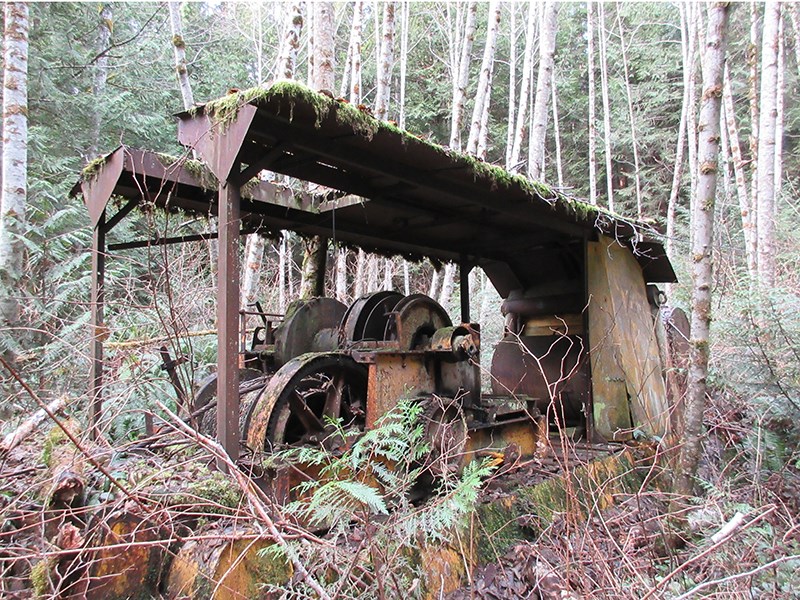One of my favourite trails in Lund follows the old road from the village and takes you up the ridge, across the spine of the peninsula and down to the Okeover Inlet side.
The trail was once a logging road and, for a while in the ’20s and ’30s, was also the walking route to Okeover School from Lund. I think about those school kids walking this trail every day and about how different our lives would be if we lived them at walking pace and distance instead of always using our cars.
About halfway along this route, just before climbing up the peak of the ridge, you turn a corner and come upon a relic. Beside the old road, mossy and salmonberry-covered, lay the remains of some logging equipment. You can see the steel runners it would have been pulled on and the giant winch with a roll of cable still on it.
Trailing blackberry bushes wind all through the gears and levers, and the house where the operator would have sat has a one-foot-thick alder tree growing straight up through the middle of it. It is rusty but intact, and the forest is happily making its leafy way into, around and over it.
I always stop and spend some time there, because there is something haunting about it.
For as long as I remember, I have been drawn to industrial decay, and you find a lot of it in the woods around here: cars and trucks and pieces of equipment that broke down and were not worth the cost of hauling out; and bits and pieces of metal, sometimes recognizable and sometimes not, being reclaimed by the forest.
It is a strange mix of comforting and unsettling. I worry about what kinds of poisonous things leak out of these abandoned machines, and I am often struck by the sheer wastefulness of the decades that came before us. Everything that is precious and scarce now, from big trees to copper cable and quarter-inch steel, seemed so cheap then; so abundant it could never run out.
It was not worth the effort to salvage what was usable from these old wrecks, because there was always more somewhere. I wonder how different our world would be now if people in my father’s and grandfather’s times had been more careful with their resources.
But there is also something heartening about it, some poetic justice in seeing just how fast the forest can gobble up these machines.
I do not want to fall into thinking that its ability to grow back means we can keep abusing our resources because, just like our bodies, land that gets continually damaged starts losing the ability to heal itself.
It is good to remember that wildness always returns; that the mistakes of the past are not irrevocable.
Seeing the way the forest eats up what is left behind gives me hope and energy to do the hard work of learning how to not repeat those same mistakes again.



